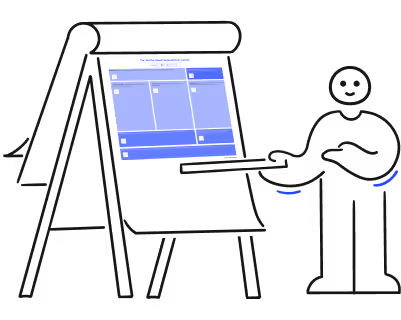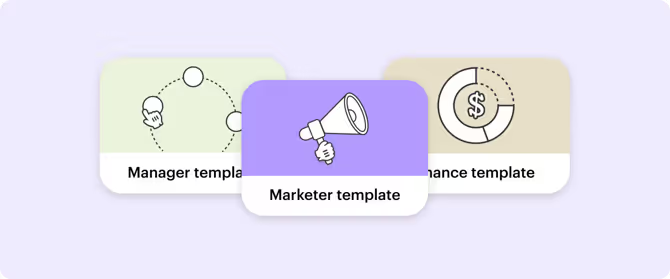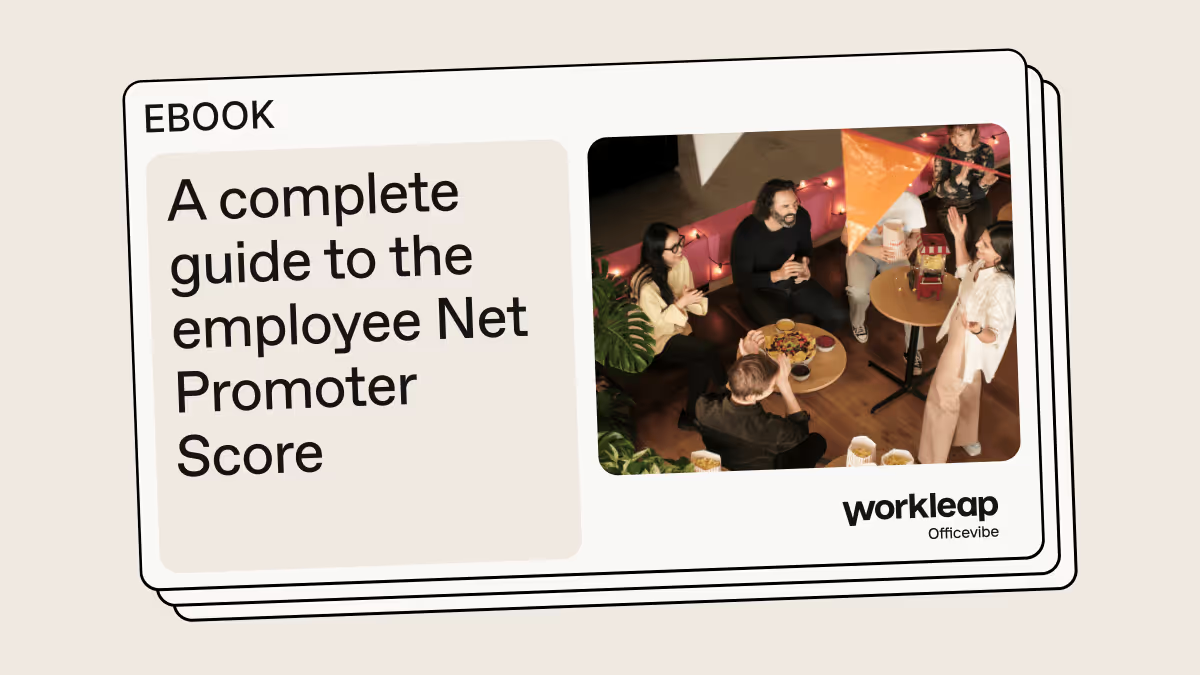7 strategies to calculate and optimize the new employee ROI

Empower your organization with the skills-based canvas.

Recruiting the right people can be expensive.
But the even more expensive part is seeing the new hires leave after only a few months… and having to start all over again.
A recent Aberdeen Group study found that almost two-thirds of companies are not entirely satisfied with their current recruitment campaigns.
Fortunately, there are several strategies to maximize the return on investment of your hiring process!
This article shows you how to calculate the ROI of your recruitment efforts and features 7 ways to optimize it.
What is a recruitment campaign?
A recruitment campaign includes all the activities and processes that are carried out to find new employees and promote your employer brand. The hiring process often takes place in several stages, starting with the job opening posting and ending with the new employee’s trial period.
In general, a recruitment campaign includes the following steps:
- Job posting
- Advertising or broadcasting campaigns
- Receipt and analysis of applications
- Pre-interview calls
- Interviews
- Legal checks and other required procedures
- Employment contract signing
- Employment start date (trial period)
- Employment confirmation (end of trial period)
Now, how do you calculate the real cost and return on investment of this entire process?
How to calculate new employee ROI?
Here is the formula to calculate the return on investment (ROI) of a recruitment campaign:
(Benefits of hiring - Cost of recruitment) / Cost of recruitment
For example :
- If your hire profits are 50 000$
- And the recruitment costs are 10 000$
(50 000 - 10 000) / 10 000 = ROI of 4
When calculating the ROI, the higher the figure, the better the return on investment. A negative ROI means that the costs are higher than the benefits.
But for a proper new employee ROI calculation, we must first have the right numbers!
Calculating the profits of hiring
The benefits of hiring are equivalent to the total financial value of each result the recruitment campaign will yield.
This data is often the hardest part to estimate, but it is essential to understand how each new hire affects the results.
Here are some examples you should consider :
Calculating the cost of recruitment
The cost of recruitment can also be difficult to estimate, especially when there are several positions that need to be filled at the same time. In this case, some expenses can affect more than one campaign and therefore must be divided when calculating the ROI.
The cost of recruitment can also be divided into two main categories: work to be done before hiring (steps 1 to 7) and work to be done during the first days of work (steps 8 and 9).
Here is a table that includes examples of things to consider:
How to optimize new employee ROI?
Now that you know how to calculate the ROI of your new hire, you must be wondering how to optimize it.
Remember that the goal is to have a high ROI!
There are two ways to do this:
- Reduce the cost of your recruitment, so reduce your expenses;
- Increase the benefits of your hires, so maximize the positive impact of each new employee.
Here’s how to go about it.
4 strategies to reduce new hire costs
Recruitment costs have increased dramatically recently, due to labor shortages and high turnover rates in several fields.
But that does not mean that it is impossible to cut back on expenses!
You just need to be strategic and anticipate the new hire mobility to prevent future hires and implement more affordable solutions.
1. Develop your employer branding strategy
Just as a company’s brand image is important for its success, developing your employer brand will greatly facilitate your recruitment process.
By positioning yourself as an employer of choice, potential candidates will want to join your team, even when you are not actively recruiting!
Showcase your mission and values throughout your content, show the work environment and your employees at work. There’s no need to wait until you have a position to fill: you should create this kind of content constantly to prepare ahead of time.
Above all, stay true and consistent in your message.
The content you show must be reflected by the internal reality because there is nothing worse than being sold a first impression that is not real.
2. Recruit several employees at the same time
Advertising, job fairs and corporate video expenses can quickly add up.
If you know that some of your employees will be leaving, taking extended time off, or if one of your teams needs to expand, you would be wise to group these in your HR marketing initiatives. Whether you are recruiting for 1 or 5 positions, the advertising costs will not be higher, so take the opportunity to group your hiring!
As an employer, you must make all the content pertaining to your offers consistent, so you may as well spread the cost over several positions rather than just one.
3. Automate your recruitment process
Companies that automate their recruitment process using tools available online, at low cost or free, will save a lot of time and money.
This does not mean that you have to eliminate human contact during the hiring process!
The biggest gain from automation is mostly felt in the time-consuming HR marketing and the application analysis steps. For example, you could sort through your applications via Facebook Messenger advertising campaigns and write automated answers to questions candidates might have, before the first contact.
Imagine all the time you will be saving by not having to make calls to prequalify your candidates.
You can also use a chatbox on your career page and include answers to questions candidates might have about the position. You can also use a software to read through resumes and extract relevant information, or use Eversign for signing electronic documents.
In short, several tools can help you optimize your hiring process and save you both time and money.
4. Outsource your recruitment campaigns
If your HR team is small or already overstretched, adding recruitment tasks can increase the total bill. For example:
- When recruitment is not your responsibility, you have a lot to learn, so it will take time to complete each one of the steps.
- If you do not specialize in marketing, it will be difficult for you to create job postings and advertising campaigns that will yield results.
- If you have too many files to manage, you may end up forgetting to follow up on certain tasks, which can greatly affect the candidate experience of your potential employees.
In short, all this negatively impacts your new employee ROI.
To avoid hassle and potential mistakes, you could outsource your recruitment campaigns to specialized agencies!
Recruto is a division of recruitment firm Ancia, which takes care of all aspects of your recruitment process: attracting candidates, talent acquisition and new hire onboarding.
Their marketing team takes care of everything.
So free yourself from recruitment tasks, so your HR team can focus on the well-being of your employees!
3 strategies to increase the benefits of your new hires
To increase the yield of your recruitment efforts, you need to think about ideas that promote employee retention and productivity. Essentially, the longer your employee stays and brings value to the company, the more costs are absorbed and spread over time.
Here are some best practices that can help you improve your new hire retention.
1. Integrate your employees into your corporate culture
The experience you have ‘sold’ through your recruitment campaign must be validated as soon as your new employees arrive.
Make sure you have an onboarding program that is well-structured, so that the new employee feels well supervised and not left to fend for themselves. If possible, organize social activities to give your recruit the chance to interact with employees from other departments!
Many companies adopt the concept of mentoring ‘buddies’ where the new employee is paired with an experienced employee who can coach them, give them feedback and answer their questions.
This concept is also useful for improving new hire retention because the mentor benefits from having their expertise be valued. This new responsibility provides a sense of pride and being helpful.
Finally, communicate your company culture and values before and during your new employee’s onboarding to make sure they fully embrace it.
2. Invest in the development of your recruits
In a competitive job market, every argument that can enhance your job offer can make a big difference.
For many, having development and continuing education opportunities is criteria in selecting their employer.
And we’re not just talking about the onboarding or short training programs!
Offer your candidates and new employees a tailor-made career management plan, including skill development activities. The more they can grow within your company, the longer they will stay.
In addition, continuous training is a way to increase the productivity of your employees and ensure a better quality of products and services. It’s a win-win!
3. Digitize your onboarding process
We have talked earlier about automating some of your recruitment tasks. What if you also used technology to speed up the onboarding of new employees?
Think about it :
- By documenting best practices and typical customer cases, you can ensure consistency in the services offered by your employees. Therefore, you can reduce the risk of customer dissatisfaction and increase the chance of making sales.
- Since they have all the information and procedures at their fingertips, it will be easier for your new employees to perform their tasks independently. Your senior team can intervene only when needed, to manage more complex cases and ensure a good understanding of the working methods!
- Automating what you often repeat also saves you time and reduces the risk of oversights or errors. By spending less time onboarding new employees, your projects move faster.
It’s your turn!
Now that you know how to calculate the return on investment of your new hire, all you have to do is implement the 7 strategies mentioned above.
Of course, ROI is a financial unit of measure, but its benefits go beyond financial return. In itself, increasing the quality of the candidate and employee experience pays back very well.
Remember that in a context of labor-shortage, it is preferable to focus your efforts on increasing employee retention than to have to recruit new ones.
And that starts with pleasant working conditions, growth opportunities and a healthy relationship with your entire team!
%20(1).png)

%20(1).avif)


.avif)
.avif)








